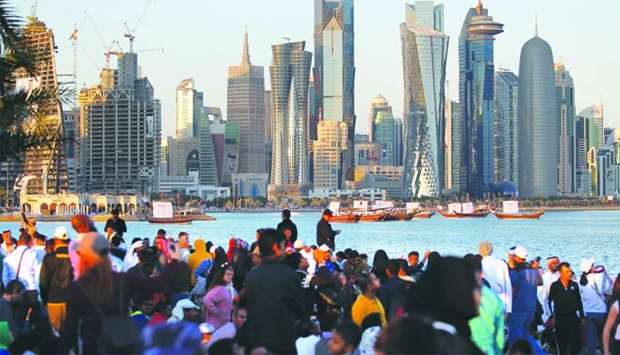A pickup in private consumption, public spending, and exports has helped Qatar fast dissipate shocks from the economic blockade, according to Washington-based Institute of International Finance (IIF).
Qatar's economy has remained resilient to the blockade, which, however, has had a silver lining, motivating deeper trade and diplomatic ties with several partners beyond their immediate geographical neighbourhood, which could pay long-term dividends, the IIF said in a report.
Although the blockade visibly crimped non-hydrocarbons in the middle of 2017, particularly in sectors such as trade, tourism, and real estate where foreign participants had played a leading role, the shock has largely dissipated, and manufacturing remained strong throughout.
"Overall, we estimate 1.9% growth for 2017, which we see rising slightly in 2018 and beyond due to a pickup in private consumption, public spending, and exports," the IIF said, forecasting Doha's private consumption to grow from 5.1% in 2017 to 6% this year and further to 10.2% in 2019.
Qatar's domestic demand is expected to increase from -0.2% in 2017 to 1.9% this year and 3.3% for the next two years, it said.
On the country's banking sector, the economic think-tank said it is recovering from a period of weakness in the middle of the year and the government’s already high fiscal buffers are being replenished.
"The previous funding pressures at Qatari banks have eased due to the recent stabilisation of nonresident deposits after a surge in withdrawals following the onset of the blockade," it said.
The authorities responded to the nonresident capital outflows by tapping the SWF (sovereign wealth fund) to provide liquidity and keep the economy on steady footing, it said, adding consequently, in a notable departure from the normal pattern, nonresidents were a net drain on capital flows in 2017, while the resident sector was a net contributor.
"Looking ahead, as nonresidents have returned to Qatar’s banks and equity market, we expect the SWF to resume its foreign investment activities in 2018, although at a subdued pace," the IIF said.
In this environment, both the sovereign and commercial banks see a ripe environment to turn to capital markets and issue new securities denominated in multi currencies, it said.
"Overall, Qatar’s international reserves and foreign currency liquidity rose in December, with total public foreign assets remaining north of 200% of GDP," it said, adding with the exchange rate peg remaining in place, interest rates would move in line with actions by the US Federal Reserve.
The country's total external debt, which was 113.2% of GDP in 2017, is expected to decline to 107.4% this year, further to 104.8% in 2019 and 102.1% in 2020.


